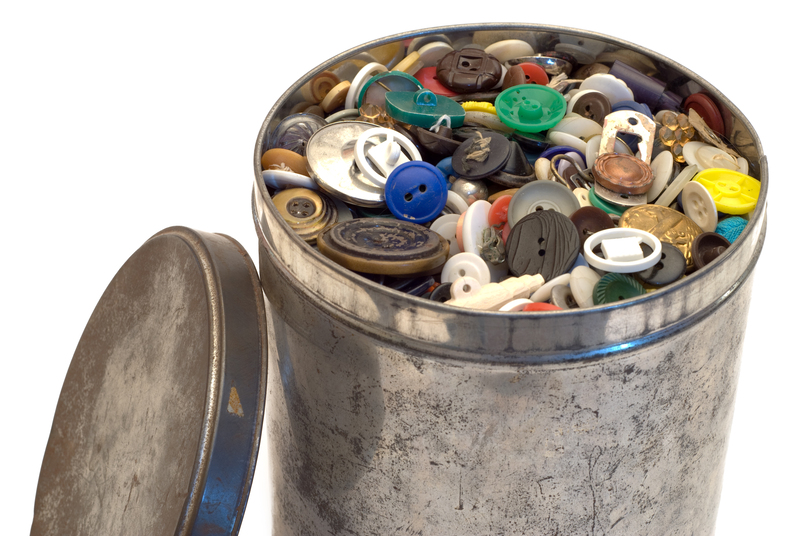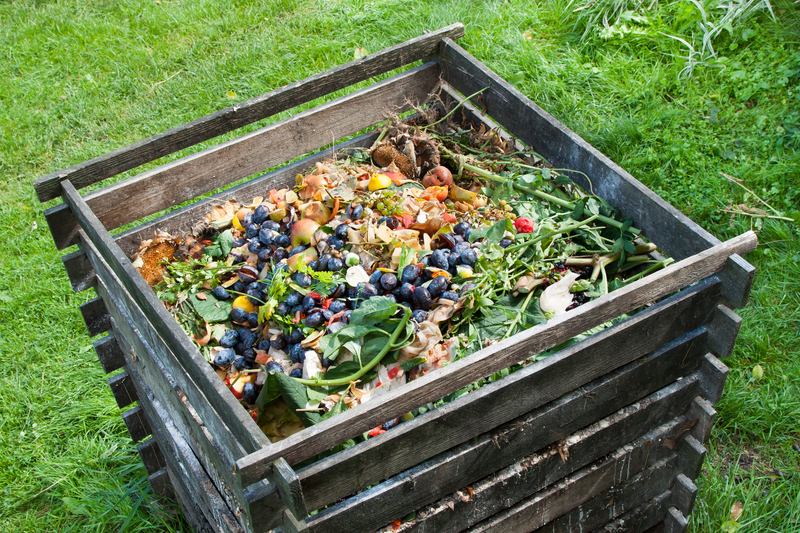Plant Pot Disposal: The Convenient Approach
As gardening becomes an increasingly popular activity in both homes and community spaces, the accumulation of plant pots--ranging from plastic containers to terracotta and ceramic planters--raises new concerns about environmental impact and sustainable waste management. Plant pot disposal is often overlooked, yet finding a convenient, responsible approach is crucial for gardeners aiming to minimize their carbon footprint and contribute positively to the planet.

Understanding the Types of Plant Pots
Before delving into sustainable plant pot disposal methods, it's essential to identify the main materials used in plant pots:
- Plastic pots: Economical, lightweight, and widely used but often end up as landfill due to recycling challenges.
- Terracotta pots: Classic, breathable, and breakable, commonly used for indoor and outdoor plants.
- Ceramic pots: Decorative and durable but heavy and difficult to recycle.
- Biodegradable pots: Made from compostable materials like coconut coir, peat, or recycled paper.
Each material requires a different approach to convenient and eco-friendly disposal. Disposing of flower pots properly not only keeps your garden organized but also helps reduce environmental pollution.
Why Responsible Plant Pot Disposal Matters
A staggering number of plastic plant pots end up in landfills each year. Many plastic pots, especially those black in color, can't be recycled by standard facilities due to their pigment and resin composition. This creates a huge environmental burden. Likewise, ceramic and terracotta pots can take thousands of years to break down, while improper disposal can harm land and waterways.
Responsible flower pot disposal conserves resources, reduces pollution, and often benefits communities through sharing and upcycling initiatives.
Convenient Plant Pot Disposal Methods
Adopting a convenient approach to plant pot disposal involves knowing your options and leveraging local resources. Here's a comprehensive guide on how to dispose of plant pots in a way that's easy for you and gentle on the environment.
1. Reuse and Repurpose
- Personal reuse: Clean and store pots for future plantings, seed starting, or propagating cuttings. Many gardeners find creative uses for smaller pots as scoops for fertilizer or as organizers in garden sheds.
- DIY projects: Upcycle old ceramic pots into indoor organizers, mosaic pieces, candle holders, or even bird feeders.
Tip: Consider painting or decorating old pots for a new look!
2. Donation and Community Sharing
- Garden centers and nurseries: Many local plant stores accept used pots for reuse or recycling--contact yours to ask about their disposal programs.
- Community gardens: Donate excess pots to local community gardens, schools, or gardening clubs where they can be reused.
- Online groups: Platforms like Craigslist, Freecycle, and Facebook Marketplace allow you to give away pots to fellow gardeners.
Donating your old plant pots can help others grow their gardening passion and prolong the life of each container.
3. Recycling Options
- Plastic pots: Check your local recycling guidelines--some municipalities now offer collection spots for #2 and #5 plastic pots. Be sure to clean them before recycling.
- Hard-to-recycle plastics: Certain specialty companies accept black or colored plastic pots (search for plant pot recycling programs in your area).
- Terracotta and ceramic: While these are generally non-recyclable, some construction recycling centers will accept broken pots as aggregate for road beds or landscaping projects.
Note: Do not throw biodegradable pots in the plastic recycling bin--they belong in your compost or green waste stream.
4. Composting Biodegradable Pots
- Peat, cardboard, and coir pots: These can usually be torn up and added to home compost bins where they'll break down naturally.
- Instructions: Check the label--some "biodegradable" pots still contain glues or additives that slow down decomposition or prevent composting.
Smart Disposal of Broken and Unusable Pots
Sometimes, even with the best intentions, pots are too cracked, broken, or otherwise damaged to be reused or recycled. Here's how to handle these cases:
Terracotta and Ceramic Pots
- Smash into pieces to use as drainage material in the bottom of new pots, preventing root rot.
- Repurpose shards as plant markers or garden path mulch.
- Donate clean broken pieces to mosaic artists if there are any in your community.
Plastic Pots
- If your local facility doesn't recycle them, consider creative upcycling: cut into garden labels, plant protectors, or small scoops.
- As a last resort, dispose broken plastice pots in landfill waste--just make sure alternative options are exhausted first.
Manufacturer Take-Back and Return Programs
Some leading gardening brands and retailers now offer plant pot take-back schemes, enabling customers to return used pots for recycling or refilling. Stores like Lowe's, Home Depot, and many local garden centers periodically run drop-off initiatives. Always clean pots before returning them, and check accepted pot types and dates for these programs.
Disposal Tips for Large or Unusual Planters
Handling bulkier items like large ceramic urns or resin planters follows many principles above. Due to their size:
- Ask local landscaping companies if they can use the items for commercial installations.
- Check with your local waste management center regarding special collection for oversized pots.
- List online for free pickup, as many gardeners or decorators appreciate larger vessels.
Steps for Easy and Eco-friendly Plant Pot Disposal
- Sort your pots by material: Separate plastics, ceramics, terracotta and biodegradable options.
- Clean thoroughly: Remove soil, debris, and any plant material to prevent disease transmission and ensure recyclability.
- Assess their condition: Set aside intact pots for reuse, donation, or recycling. Identify broken items for upcycling or proper waste stream.
- Research your local recycling rules: Policies change frequently. Local councils or recycling facilities can tell you if and where plant pots are accepted.
- Explore community options: Check for local plant swaps, donation drives, or school gardening programs in need of supplies.
- Compost if possible: Only apply this to plant pots made from natural biodegradable materials.
- As a last step, landfill: Only send non-reusable, non-recyclable, non-compostable pots to landfill.
Long-Term Strategies to Reduce Pot Waste
While proper plant pot disposal is important, reducing waste at its source is even better. Consider these strategies for a sustainable gardening practice:
- Buy in bulk: Opt for fewer, larger purchases to minimize the number of pots accumulating over time.
- Choose unpainted terracotta or clay: These degrade more easily in the environment compared to heavily glazed ceramics or plastics.
- Embrace pot-free gardening: Sow seeds directly into the ground, raised beds, or permanent planters.
- Invest in high-quality, long-lasting pots: Durable containers may have a higher upfront cost but save money and reduce waste in the long term.
Making eco-conscious decisions when purchasing and disposing of plant pots creates a positive gardening impact for future generations.

Frequently Asked Questions About Plant Pot Disposal
Can I put plastic plant pots in the curbside recycling bin?
It depends on your municipality's rules. In many regions, plastic plant pots--especially black ones--are not accepted via curbside recycling. Instead, check for specific drop-off locations at garden centers or recycling depots.
How can I sanitize used plant pots before reuse?
Scrub off soil and debris, then soak pots in a solution of one part bleach to nine parts water for 10-15 minutes. Rinse thoroughly and dry before reusing or donating.
What should I do with broken ceramic or terracotta pots?
Repurpose the shards as drainage material in new plant pots, use as mulch, or donate to mosaic artists. If you must discard, contact your local landfill or construction recycling service for possible collection.
Are biodegradable pots better for the environment?
Yes! Pots made from coconut coir, peat, rice husk, or recycled paper break down naturally in the compost, adding organic material to your soil and eliminating landfill waste.
Conclusion: Easy Ways to Dispose of Plant Pots Responsibly
Plant pot disposal doesn't have to be a chore--by following a convenient, eco-friendly approach, you can keep your garden tidy, support your community, and protect the planet. Whether you're reusing, donating, recycling, composting, or exploring new buying habits, each small step goes a long way. Join gardeners across the world in making sustainable choices, and let's keep our love for plants from turning into a burden for the Earth.
With these practical, easy-to-follow tips for convenient plant pot disposal, you can reduce gardening waste and make a positive environmental difference--all while enjoying the beauty of your backyard or balcony oasis.